The Indian elephant (Elephas maximus indicus) is one of the three living subspecies of Asian elephants (Elephas maximus). Indian elephants are large, herbivorous mammals, which means that they eat plants, not animals. Their immense size means they are often classified as one of the “mega-fauna” animals. The Indian elephant’s most striking features are the long trunk, which is prehensile (the elephant can grip objects with it), large ears, and tusks (on males). Read on to learn about the Indian elephant.
Description of the Indian Elephant
Indian elephants have large heads, but only short necks. They have short, but powerful legs that support their entire body-weight, like columns. Indian elephants have large ears to help them regulate their body temperature, and to communicate with other elephants; however, their ears are smaller than those of African elephants. Indian elephants also have a more curved spine than the African elephant, and their skin color is lighter than that of the Asian elephant, having smaller patches of skin without pigment.
These elephants have long tails that grow down below their knees. Female Indian elephants rarely have tusks, and if they do, the tusks do not grow beyond the mouth. Females reach full weight at 25-30 years of age, whereas the males are not fully grown until they are 35-45 years of age.
Interesting Facts About the Indian Elephant
Due to their great size, and the wide variety of habitats in which they live, Indian elephants have several adaptations which make them unusual animals. These often relate to food and water gathering behaviors.
- Trunk – There are around 150,000 muscles in the trunk, but no bones
- Tusks – Tusks, which are often used to dig up roots, grow about 6 in (15 cm) a year
- Drinking – They can drink 53 gallons (200 liters) of water each day during the summer
- Sociality – Elephant herds have “aunties” who look after the babies of other females
Habitat of the Indian Elephant
Indian elephants can be found in a wide range of habitats, including grasslands, forests (moist, tropical or dry), and also cultivated forests and scrublands.
Distribution of the Indian Elephant
Indian elephants are the most widely distributed of the three sub-species of Asian elephants. They are found throughout southeast Asia, including countries such as Bangladesh, Bhutan, Burma, Cambodia, China, Laos, parts of Malaysia, Nepal, Pakistan, Thailand, and Vietnam.
Diet of the Indian elephant
Elephants are classified as mega-herbivores, i.e. they are plant-eating mammals that weigh more than 2,200 lb (1,000 kg). They can consume up to 330 lb (150 kg) of plant material each day. They are considered to be generalist feeders, as they are both grazers (feeding on grasses), and browsers (feeding on trees and shrubs). In one study, Indian elephants were recorded as feeding on 112 different plant species. They also graze on tall grasses; when the new growth appears, usually in April, they skillfully remove the tender blades and shoots. When the grasses are taller, the elephants pull up entire clumps, shake the dust of them and then eat the fresh leaf tops but throw away the roots. They also eat farmed crops such as sugarcane, rice, and bananas.
Indian Elephants and Human Interaction
One of the most significant threats to Indian elephants is the expanding human population, which results in habitat fragmentation, degradation, and habitat loss. Some building projects, such as hydroelectric plants, reservoirs, and mining, can impede the Indian elephants’ free movements.
Farmers with only a small amount of land can lose the entirety of their crops overnight from Indian elephant raids. For this reason, elephants are sometimes killed or harassed when they trample or eat crops.
Indian elephants are poached for their ivory tusks. Because only male elephants have tusks, their deaths from poaching are having a serious impact on the ratios of male to female elephants in the wild. As there are though to be only 20,000 Indian elephants in the wild, this upset in the breeding population could bring on their extinction.
Indian elephants are used widely in logging camps and also in the tourist industry.
Domestication
Elephants have been used by humans for hundreds of years for purposes such as foresting, working in logging camps, as animals of war, and more recently for the tourist industry. However, elephants in general are considered to be semi-domesticated, rather than fully domesticated. This is because the elephant’s very long life span makes it difficult for humans to select them for desirable characteristics.
Does the Indian Elephant Make a Good Pet
Indian elephants can be trained to a high degree, and tamed; however, due to their immense size and strength, they are not good pets. Elephants are usually kept as livestock in heavily fortified enclosures.
Indian Elephant Care
When keeping elephants captive, there should be sufficient space (in the wild, they usually walk tens of miles each day to gather food and water). They also require a suitable floor substrate as, on hard surfaces, they frequently develop foot problems, such as cracked toes and ulcers. Their diet must be watched carefully, as they tend to over-eat to the point of becoming over-weight. This, in turn, may lead to other health problems.
Behavior of the Indian Elephant
Indian elephants may spend up to 19 hours a day feeding. From this, they defecate about 16-18 times each day, producing about 220 lb (100 kg) of dung. Indian elephants migrate each year, following strict migration routes, while being led by the eldest member of the herd. The migration usually occurs between the wet and dry seasons.
Reproduction of the Indian Elephant
Females (called “cows”) can usually breed when they are 10-15 years old. After a pregnancy (called the “gestation period”) of 22 months, they give birth to a single baby (called a “calf”) which weighs about 220 lb (100 kg). Elephant calves are cared for by their mothers, and also by other females in the herd (called “aunties”). Calves stay with their mothers until they are about 5 years old, at which time males often leave the herd, but females remain.
Beliefs, Superstitions, and Phobias About the Indian Elephant
The Hindu God, Ganesh, has the head of an elephant.



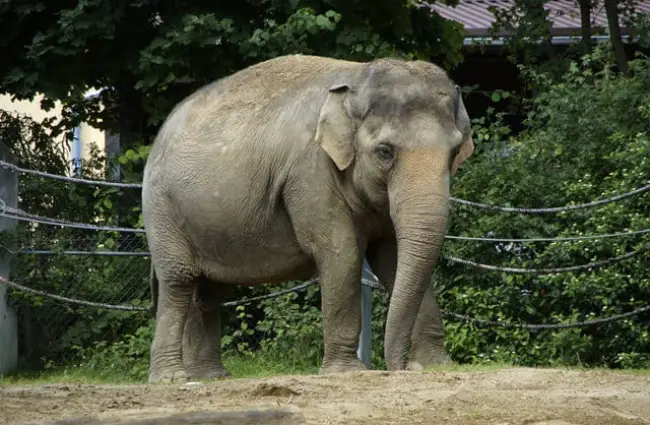
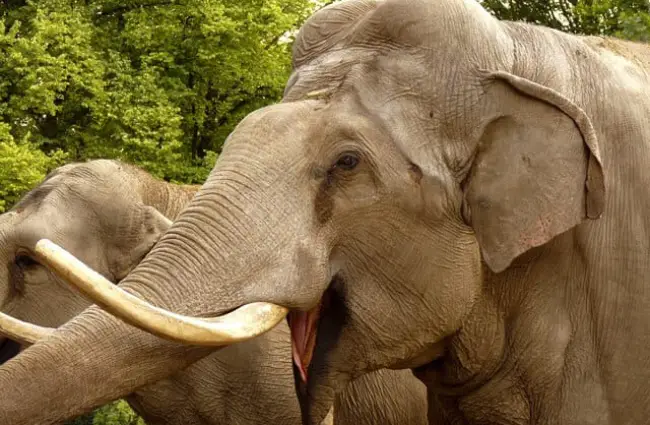
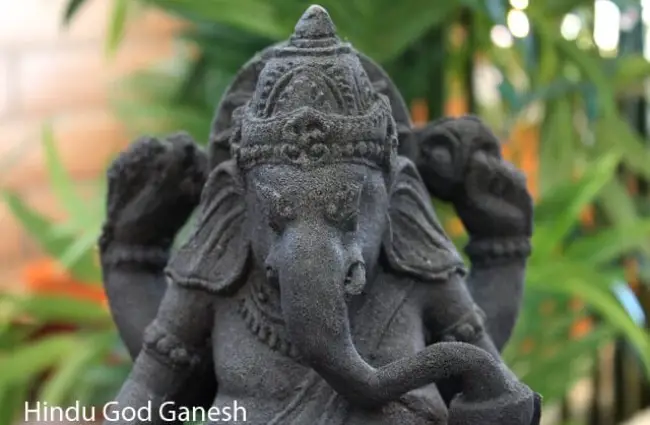

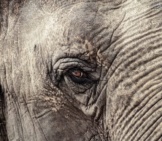

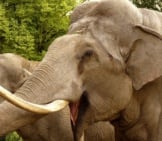












![Red Angus Closeup of a beautiful Red Angus cowPhoto by: U.S. Department of Agriculture [pubic domain]https://creativecommons.org/licenses/by/2.0/](https://animals.net/wp-content/uploads/2020/03/Red-Angus-4-100x75.jpg)

